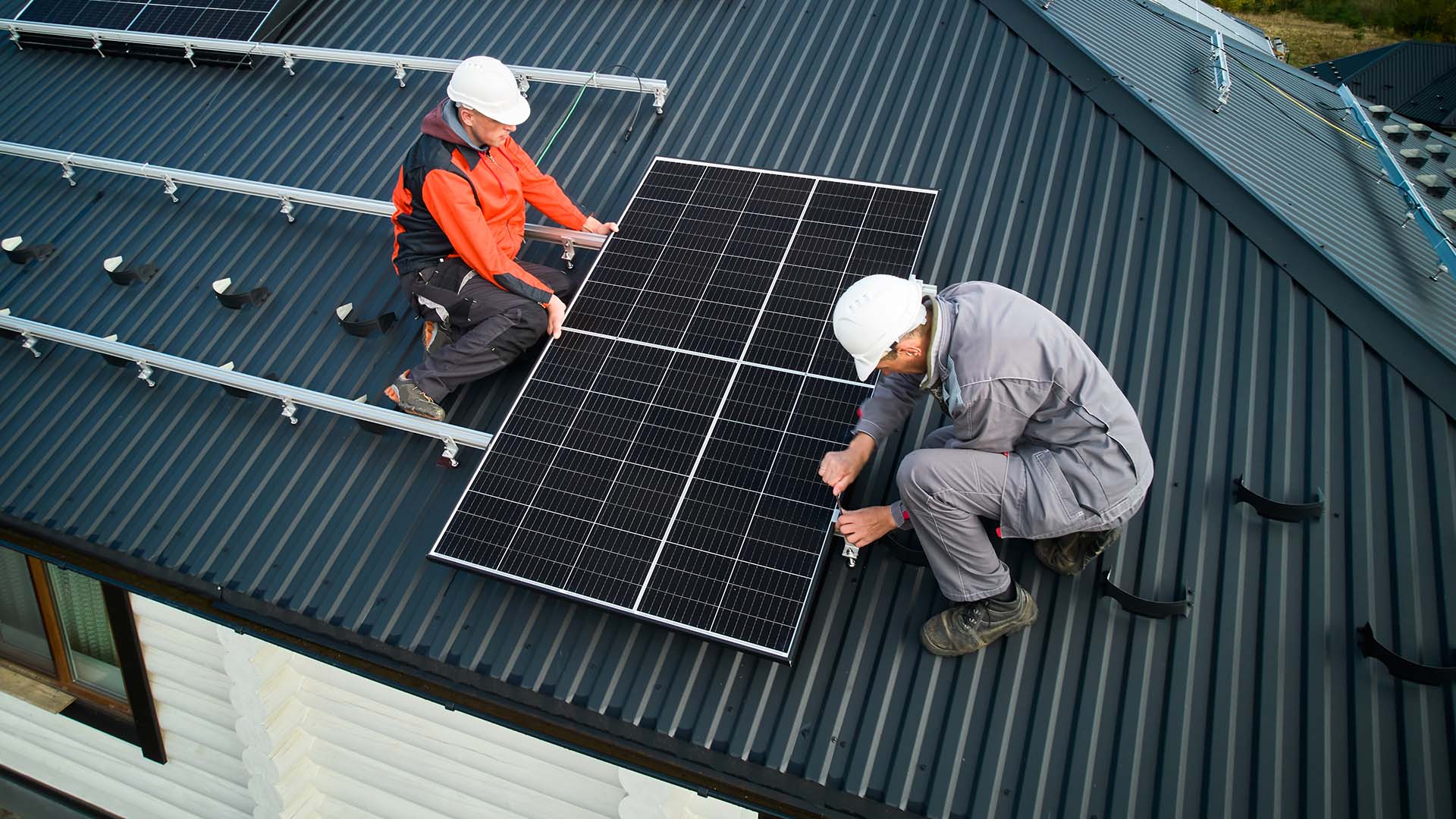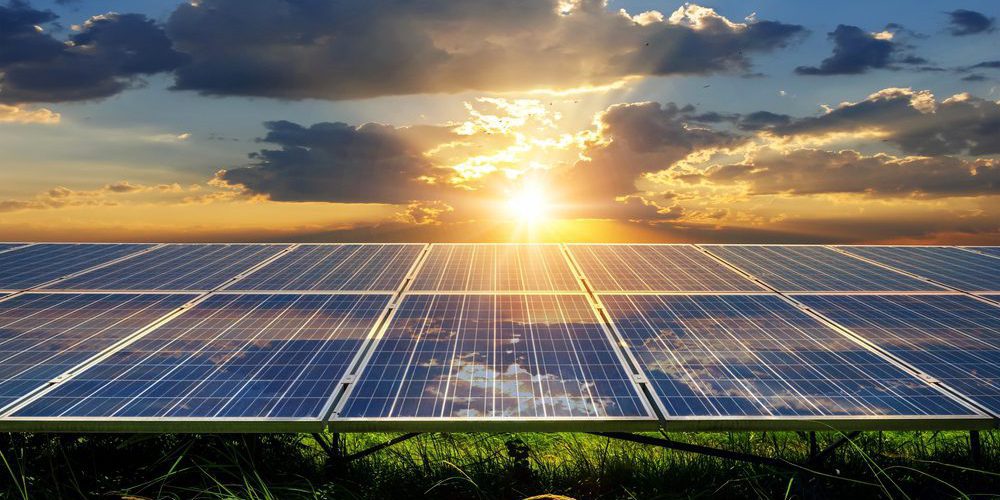The Ultimate Overview to Selecting the very best Solar Panels
Selecting the ideal photovoltaic panels is a complex decision that goes past mere aesthetic appeals or price. It involves a cautious examination of various types, including monocrystalline, polycrystalline, and thin-film options, each presenting distinct benefits and disadvantages. Recognizing effectiveness ratings, expenses, and setup requirements is essential for making an enlightened selection that straightens with your power needs and spending plan. As the landscape of solar technology remains to progress, the ramifications of your choice can have long lasting results-- both economically and ecologically. What aspects should you prioritize to make sure optimal performance and sustainability?
Comprehending Photovoltaic Panel Types
Monocrystalline panels are constructed from a solitary crystal framework, providing high efficiency and space-saving advantages. In comparison, polycrystalline panels make up several crystal frameworks, leading to a somewhat lower performance rate.
Thin-film photovoltaic panels are made from a variety of products, including cadmium telluride and amorphous silicon. They are lightweight and versatile, allowing for special applications, such as assimilation into building materials. Although they tend to have reduced efficiency rates contrasted to crystalline panels, their installment costs and adaptability can make them an attractive option for certain projects.
Comprehending these kinds will certainly encourage you to make educated choices based upon your power needs and budget plan considerations.

Evaluating Efficiency Rankings
Assessing efficiency ratings is important for choosing photovoltaic panels that align with your power goals. The efficiency of a photovoltaic panel shows the percent of sunshine exchanged useful electrical energy. Greater performance ratings indicate that panels can produce even more energy in a provided area, making them specifically beneficial for installments with minimal area.
Common solar panel performances vary from 15% to over 22%. When comparing options, it is vital to take into consideration the type of solar technology utilized, as monocrystalline panels usually supply higher efficiency than polycrystalline panels. Efficiency is not the single standard; aspects such as installation positioning, shielding, and neighborhood climate can significantly influence general performance.
Additionally, understanding the efficiency rating's effects for power manufacturing in time is crucial. Higher performance panels might use far better rois, especially in areas with high power expenses or restricted installment room. It's recommended to look for panels with a strong performance warranty, as this can supply added guarantee of their longevity and effectiveness. By thoroughly assessing efficiency rankings, you can make an informed choice that optimizes your solar power capacity and meets your certain energy requirements.
Comparing Costs and Service Warranties
Expense and guarantee considerations are important parts in the solar panel option procedure. When assessing photovoltaic panels, the ahead of time expense is a main issue. Rates can differ significantly based upon the brand, modern technology, and effectiveness scores of the panels. High-efficiency panels might have a greater initial financial investment but can result in better lasting financial savings with raised power manufacturing. It is essential to examine the total value rather than simply the price tag.
Service warranties are equally vital, as they provide understanding right into the supplier's self-confidence in their item. The majority of trustworthy solar panels come with two sorts of guarantees: efficiency and product. Performance service warranties commonly ensure a specific outcome level for 25 years, guaranteeing that the panels will maintain their effectiveness gradually. Product guarantees, on the other hand, cover flaws and craftsmanship, usually enduring between 10 to 25 years.
When comparing costs and warranties, take into consideration the long-lasting ramifications of both. A lower-priced panel with a short service warranty may wind up being a lot more pricey if performance declines or fixings are required earlier than anticipated. It's vital to balance initial costs with the safety provided by durable warranty choices.
Installation Considerations

Following, think about the alignment and tilt of the solar panels. Preferably, panels should be placed to make best use of sun direct exposure throughout the day. South-facing installments usually produce the greatest energy production, however east and west orientations can also work depending on your power needs.
Furthermore, regional building regulations and policies have to be assessed before installment. Allowing requirements can vary considerably by area, and compliance is critical to stay clear of potential penalties or navigate to this site required removals.
Last but not least, working with a certified specialist for installment is essential (Solar Panels). Experienced installers will guarantee that the system is correctly positioned, attached, and certified with all safety and security criteria. This decision can eventually improve the longevity and effectiveness of your solar power system, making it a worthwhile financial investment for your renewable resource demands
Upkeep and Long Life
Proper upkeep is necessary for ensuring the durability and optimum efficiency of solar panels. Routine inspections and cleaning are important elements of this maintenance regimen. Dust, particles, and snow accumulation can significantly hamper power production, so it is suggested to clean the panels regularly, preferably every 6 months or after significant climate events.
In addition, monitoring the system's performance through a solar surveillance application or gadget enables house owners to identify any type of drops in energy result that may suggest problems needing focus. It's also prudent to look for any kind of signs of wear or damages, such as fractures in the panels or deterioration in the electrical wiring. Spending in top notch photovoltaic panels usually comes with longer service warranties, generally ranging from 25 to thirty years, which can act as a sign of their expected longevity.
Routine professional inspections can additionally boost the lifespan of your solar energy system, making sure that any kind of potential issues are attended to quickly (Solar Panels). By adhering to these upkeep practices, home owners can take full advantage of not just the effectiveness of their photovoltaic panels but find out this here additionally their roi throughout the years, contributing to a sustainable energy future
Final Thought
To conclude, selecting the optimal photovoltaic panels requires a thorough evaluation of various variables, including panel kinds, effectiveness ratings, costs, and service warranties. Setup considerations and recurring upkeep play important duties in guaranteeing the long life and efficiency of the solar power system. By prioritizing top notch items and specialist setup, individuals and companies can make best use of energy financial savings and add to lasting power practices. This enlightened strategy ultimately leads to a more reliable shift to renewable resource services.